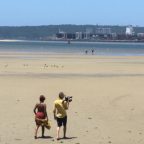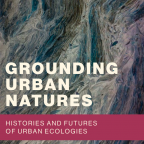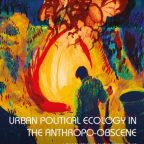SITUATED ECOLOGIES gathers art, design and research collaborations to contest and democratise ecologies.
Latest News
News Categories
- Conferences (8)
- GROWL Project (1)
- Learning resources (7)
- MAIN NEWS (130)
- Announcements (50)
- Conferences (7)
- Deliverables (27)
- Exchange (1)
- NEWS: Anthro-Obscene UPE+20 (7)
- NEWS: General (56)
- NEWS: Grounding Urban Natures Book Project (7)
- NEWS: MOVE Project (13)
- NEWS: PhD Courses (6)
- NEWS: Ways of Knowing Urban Ecologies (30)
- Presentations (7)
- Publications (13)
- Relevant books (6)
- Teaching (13)
- SUPE Feed (90)
- HICCUP (3)
- SUPE Announcement (22)
- SUPE Commentary (32)
- SUPE Course (2)
- SUPE Learning (12)
- SUPE News (38)
- SUPE Research Exchange (5)
- SUPE Workshop (3)
- TLR Waste Politics (2)
- uncategorized (8)
- Video (3)
- Visual Environmental Humanities (8)



Loading Capetonian nature with political content
Emile YX? and Mixed Mense performing at Princess Vlei, Cape Town on June 16, 2012.
Reformatting the grammar by which to understand the city
Acquire speech
Homage to the Princess at Youth Day June 16, 2012, Princess Vlei in Cape Town. At this Youth Day, which commemorates students killed in the 1976 Soweto Uprising, the increasingly coherent campaign to Save the Princess Vlei had reached a clear point of maturation. The persons and organizations behind the Princess Vlei Forum had attracted support to resist the building of a shopping centre, and instead continue the rehabilitation of this wetland and green space towards a biodiversity rich and well-working public open space. Emile YX? and Mixed Mense warmed up the audience with young talented dancers, and earlier a priest, an imam, and a Khoi chief, had all given their blessings. Even the regional leader of South Africa’s largest labour union COSATU, Tony Ehrenreich gave a speech for saving Princess Vlei, a wetland and green area in Cape Town. This year Archbishop Desmond Tutu visited the vlei to give his support on September 2, 2013.
Endnote:[1] A very interesting process is ongoing through the Princess Vlei Forum (PVF), the campaign organization set up in 2012, and their ‘design bid’ to develop a public participation process in relation to the World Design Capital 2014 for Cape Town. While I played a part in writing a preliminary outline, journalist and writer Bridgett Pitt, with a past in the 1980s the anti-apartheid Grassroots Community Newspaper, has played a major role. It was ‘selected’ by the World Design Capital committee and has attracted professional designers and artists, including colleagues at the African Centre for Cities. However, since the whole framework of the World Design Capital is to ‘bridge the divides’ of the city, which obviously Princess Vlei could play into since it has gathered people with different languages, racial/ethnic groups, and works across the culture/nature divisions, this framing could also force the deep differences that I am writing about here off the chart of what is possible to do with such a ‘design bid’. In negotiating the wishes of the World Design Capital, deep differences needs to be negotiated and refigured into something less disruptive, something more ‘constructive’. But I might be wrong. Can we ask for subversive urban design? An urban design that aims to place among us the differences that proper political procedure needs to work with and through? That can participate in the staging of difference? If possible, it would be something akin to radical democratic design—or why not, “urban design from Cape Flats”, capeflattian design. Maybe, Princess Vlei can serve as a serious experimental ground for this—together with other spaces of Cape Flats, and similarly marginalized spaces of Cape Town. More on this in my next part of this sequel of essays.